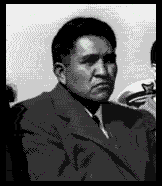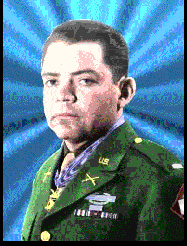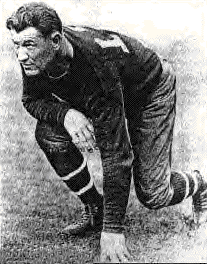Eholi Wohali ©Tributes



 Ira Hamilton Hayes 1923 - 1955 Some time ago, Johnny Cash recorded a song about a Marine who was Pima American Indian and a war hero. At the time, the song "buzzed" in people's minds, but was soon forgotten. Today, very few people have any idea who Ira Hamilton Hayes was, and even fewer people really know what this great First American represented to his People and what he was really all about. He was a simple, yet, great American Indian who made the annals of history. Please read on and enrich your mind, body and soul.
In 1961 Tony Curtis starred in the movie " The Outsider" a film biography of Ira Hamilton Hayes, the American Indian who helped raise the flag on Iwo Jima
Ira Hamilton Hayes was a full blooded Pima Indian and was born in Sacaton, Arizona, on the Pima Reservation on Jan 12, 1923. His parents Joe E. and Nancy W. Hayes were both farming people. Although he had a normal childhood on his reservation, and he had hardly ever been off the reservation, his life changed dramatically when war broke out and he joined the Marine Corps and went on to the U.S. Marine Corps Parachutist School at San Diego, California. He was dubbed "Chief Falling Cloud." Before he left, his Chief told him to be an "Honorable Warrior" and bring honor upon his family and people. Ira Hayes was assigned to a parachute battalion of the fleet Marine Force. Ira was a dedicated Marine; quiet and steady, and was admired by his fellow Marines who fought alongside him in three Pacific battles. By the beginning of 1945, he was part of the American invasion force that attacked the Japanese stronghold of Iwo Jima. On Feb. 23, 1945 to signal the end of Japanese control, Hayes and five others raised the U. S. flag atop Mount Suribuchi on the island of Iwo Jima. Three of the six men were killed while raising the flag. This heroic act was photographed by Joe Rosenthal, and it transformed Ira Hayes' life forever. Subsequently a commemorative postage stamp was created as well as a bronze statue in Washington DC. President Franklin D. Roosevelt called the brave survivors of the flag raising back to the United States to aid a war bond drive. When Ira learned that President Roosevelt wanted him and the other survivors to come back to the US to raise money on the 7th Bond Tour, he was horrified. To Ira, the heroes of Iwo Jima, those deserving honor, were his "good buddies" who died there. Once at the White House, President Truman told Ira, "You are an American hero." But Ira didn't feel pride, and as he later lamented, "How could I feel like a hero when only five men in my platoon of 45 survived, when only 27 men in my company of 250 managed to escape death or injury?" They were shuttled from one city to another for publicity purposes with questionable sincerity on the part of the American military. Ira Hayes asked to be sent back to the front lines, stating that "sometimes I wish that guy had never made that picture". The Bond Tour was an ordeal for Ira. He couldn't understand or accept the adulation . . . "It was supposed to be soft duty, but I couldn't take it. Everywhere we went people shoved drinks in our hands and said 'You're a Hero!' We knew we hadn't done that much but you couldn't tell them that." Ira went back to the reservation attempting to lead an anonymous life. But it didn't turn out that way . . . "I kept getting hundreds of letters. And people would drive through the reservation, walk up to me and ask, "Are you the Indian who raised the flag on Iwo Jima?" At the conclusion of World War ll he returned to his reservation, disillusioned by what he felt was unwarranted adoration. Ira tried to drown his "Conflict of Honor" with alcohol. Arrested as drunk and disorderly, his pain was clear . . . "I was sick. I guess I was about to crack up thinking about all my good buddies. They were better men than me and they're not coming back, much less back to the White House, like me." In 1954, Ira reluctantly attended the dedication of the Iwo Jima monument in Washington. After a ceremony where he was lauded by President Eisenhower as a hero once again, a reporter rushed up to Ira and asked him, "How do you like the pomp & circumstances?" Ira just hung his head and said, "I don't." He began to drink heavily resulting from well-meaning friends offering drinks in their appreciation of his "Heroism" . He was never able to get his life back in balance again. Ira died three months later after a night of drinking. As Ira drank his last bottle of whiskey he was crying and mumbling about his "good buddies." Ira was 32. He died of exposure and alcohol at the age of thirty-three on January 24th 1955. He was memoralized by the Pima people and characterized as "a hero to everyone but himself". He is buried in Arlington Cemetery. He never married. All he ever wanted to do was live his life.
|
 MONTGOMERY, JACK C. Rank and organization: First Lieutenant, U.S. Army, 45th Infantry, Division Thunderbirds. Place and date: Near, Padiglione, Italy, 22 February 1944. Entered service at: Sallisaw, Okla. Birth: Long, Okla. G.O. No.: 5, 15 January 1945. Citation: Medal of Honor
Jack C. Montgomery. A Cherokee from Oklahoma, and a First Lieutenant with the 45th Infantry, Division Thunderbirds. For conspicuous gallantry and intrepidity at risk of life above and beyond the call of duty on 22 February 1944, near Padiglione, Italy. Two hours before daybreak a strong force of enemy infantry established themselves in 3 echelons at 50 yards, 100 yards, and 300 yards, respectively, in front of the rifle platoons commanded by 1st Lt. Montgomery. The closest position, consisting of 4 machineguns and 1 mortar, threatened the immediate security of the platoon position. Seizing an Ml rifle and several hand grenades, 1st Lt. Montgomery crawled up a ditch to within hand grenade range of the enemy. Then climbing boldly onto a little mound, he fired his rifle and threw his grenades so accurately that he killed 8 of the enemy and captured the remaining 4. Returning to his platoon, he called for artillery fire on a house, in and around which he suspected that the majority of the enemy had entrenched themselves. Arming himself with a carbine, he proceeded along the shallow ditch, as withering fire from the riflemen and machinegunners in the second position was concentrated on him. He attacked this position with such fury that 7 of the enemy surrendered to him, and both machineguns were silenced. Three German dead were found in the vicinity later that morning. 1st Lt. Montgomery continued boldly toward the house, 300 yards from his platoon position. It was now daylight, and the enemy observation was excellent across the flat open terrain which led to 1st Lt. Montgomery's objective. When the artillery barrage had lifted, 1st Lt. Montgomery ran fearlessly toward the strongly defended position. As the enemy started streaming out of the house, 1st Lt. Montgomery, unafraid of treacherous snipers, exposed himself daringly to assemble the surrendering enemy and send them to the rear. His fearless, aggressive, and intrepid actions that morning, accounted for a total of 11 enemy dead, 32 prisoners, and an unknown number of wounded. That night, while aiding an adjacent unit to repulse a counterattack, he was struck by mortar fragments and seriously wounded. The selflessness and courage exhibited by 1st Lt. Montgomery in alone attacking 3 strong enemy positions inspired his men to a degree beyond estimation.
|
 Jim Thorpe
A very appropriate description for Jim Thorpe would be T"he greatest athlete of the 20th Century." Many will debate this, but Thorpe's accomplishments speak louder than words. King Gustav V of Sweden told Thorpe: "Sir, you are the greatest athlete in the world." Jim Thorpe was born on May 28, 1887 in a one-room cabin in Oklahoma. Although there is confusion on Thorpe's date of birth, this is the date according to his estate. He had some French and Irish blood but he was of mostly Sac and Fox Indian heritage. His Indian name, Wa-Tho-Huk, translated to "Bright Path", something that Thorpe definitely had ahead of him. His biography reads like an encyclopedia of sports, encompassing virtually every major athletic event available. In the 1912 Olympic Games, he won both the pentathlon and decathlon events. In the same year, he led his Carlisle Indian School team to the national collegiate championship, scoring 25 touchdowns and 198 points. Following the college football season, Thorpe went on to play 6 years of Major League Baseball. Meanwhile, he managed to lead the Canton Bulldogs football team to unofficial world championships in 1916, 1917, and 1919. When he eventually finished his playing days in 1928 with the Chicago Cardinals, Jim Thorpe had become an athletic attraction that crowds flocked to see. Thorpe died on March 28, 1953. In 1950, the nation's press selected Jim Thorpe as the most outstanding athlete of the first half of the 20th Century and in 1996-2001, he was awarded ABC's Wide World of Sports Athlete of the Century.
Height: 6'-1" Weight: 190 lbs. Position: Halfback Played for Carlisle Indian School, Canton Bulldogs, Cleveland Indians, Oorang Indians, Rock Island Independents, New York Giants, Canton Bulldogs and Chicago Cardinals. He was the most famous American athlete of the age. He was excellent at every sport he tried. He won the decathlon and penthatlon events at the 1912 Olympics. He did play major-league baseball from 1913 to 1919. Football was his favorite sport. In 1912, Thorpe scored 25 touchdowns and 198 points in leading his Carlisle Indian School team to a national collegiate championship. Jim Thorpe was selected by the nation's press in 1950 as the most outstanding athlete of the 20th century. Jim Thorpe was also declared as "America's Greatest football player of the half-century," in 1950.
1. Believe it or not, a player once hit 3 home runs into 3 different states in the same game...Olympic champion Jim Thorpe played in a semi-pro baseball game in a ballpark on the Texas-Oklahoma-Arkansas border...He hit his first homer over the leftfield wall with the ball landing in Oklahoma...Then he hit a homer over the rightfield wall, into Arkansas...His third homer of the game was an inside-the-park home run in centerfield, which was in Texas!
2. Thorpe is one of two men in history who played for both the New York football (running back) and the baseball (outfielder) Giants.
3. Thorpe played football professionally well past his prime, retiring in 1928 at age 41.
4. Jim Thorpe played major and minor league baseball for 20 years, starting with the New York Giants in 1913, later playing for the Boston Braves and the Cincinnatti Reds, plus several others.
5. Thorpe was the first president of what is now the National Football League. 6. Thorpe was .252 in his six seasons (1913-15, 1917-19) as an outfielder with the Giants, Cincinnati Reds and Boston Braves. 7. Thorpe's best baseball season was his last, when he batted .327 in 60 games for Boston.
|















